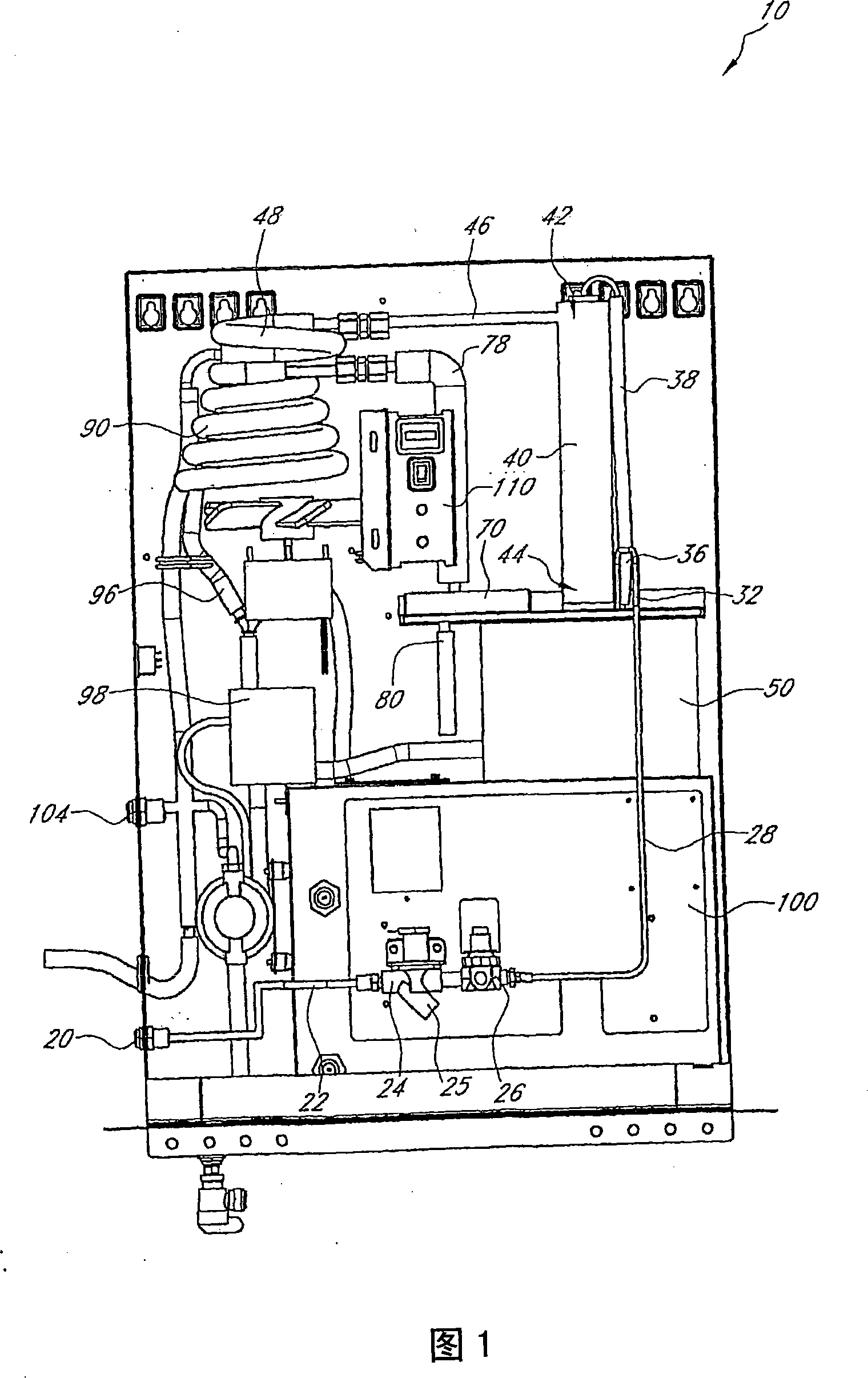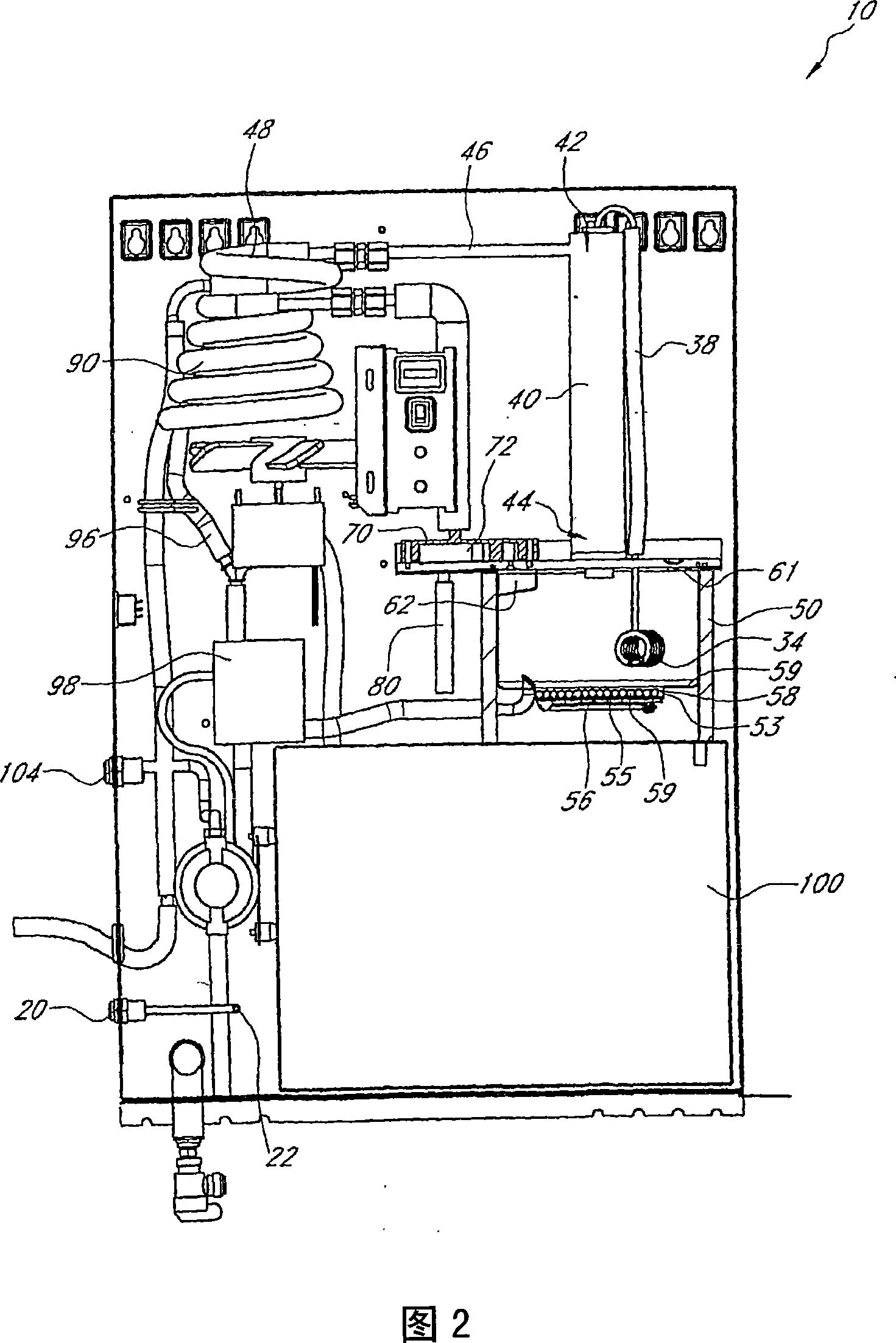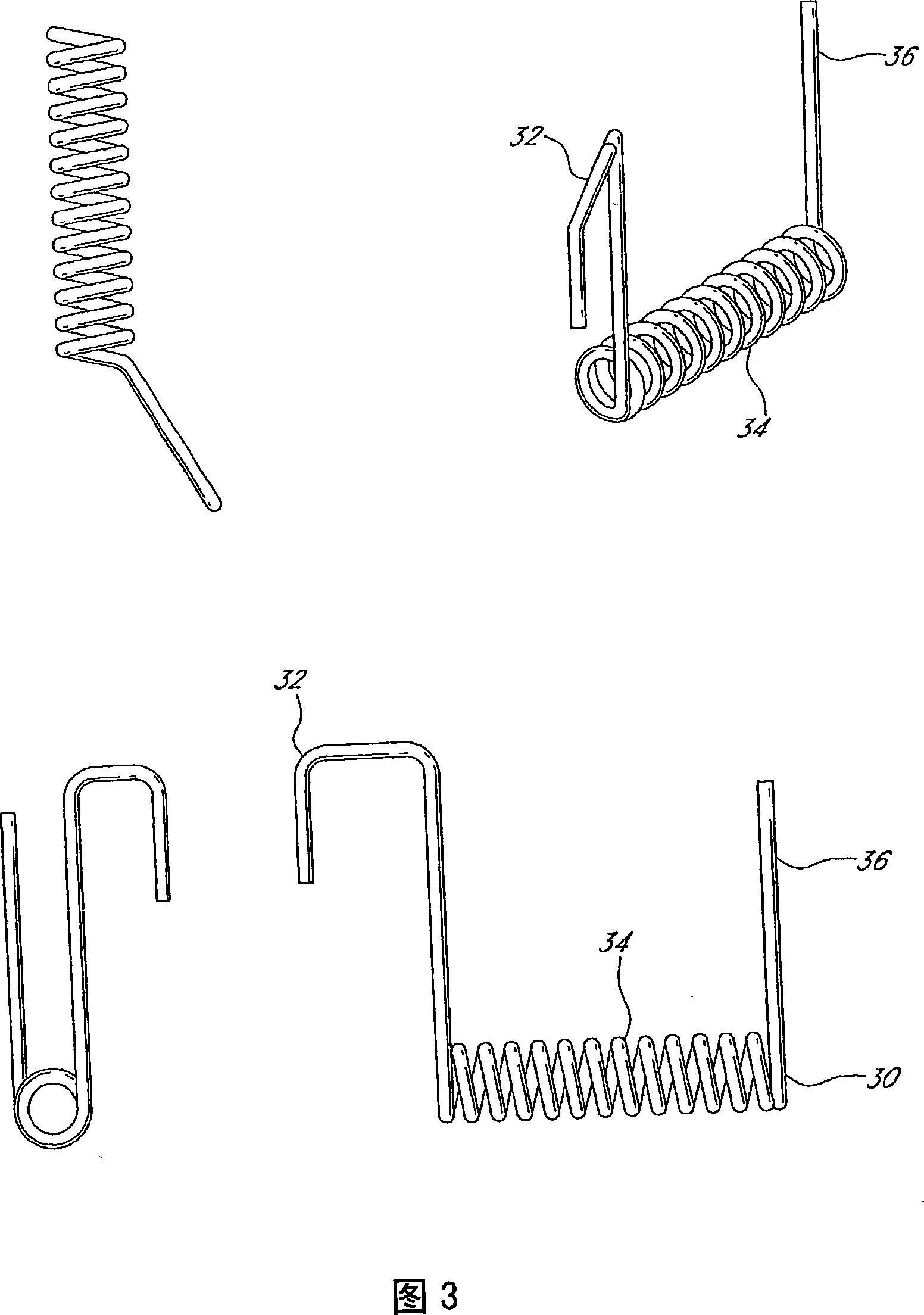Water purification system
A demister and steam technology, applied in the field of water purification, can solve problems such as expensive and complex sensor systems
- Summary
- Abstract
- Description
- Claims
- Application Information
AI Technical Summary
Problems solved by technology
Method used
Image
Examples
Embodiment 1
[0177] Removal of non-volatile or volatile organics in degassers
[0178] As a demonstration of the effectiveness of the deaerator in the described embodiment of the invention, a test was performed with isopropanol in incoming water. Allow the system to charge for full deaerator functionality: warm up the system to allow preheating and a steady state volume of steam is delivered from the evaporation chamber to the deaerator. A sample of incoming water containing 4 ppm isopropanol was introduced into the system, and the product water from the sample was then quantitatively tested for the presence of isopropanol. A decrease of about 100× was noted: the concentration of isopropanol in the effluent was about 40 ppb.
Embodiment 2
[0180] Removal of Biological Contaminants
[0181] Total coliforms are relatively easy to culture in the laboratory and, therefore, have been chosen as the primary indicator bacteria for the presence of disease-causing microorganisms. Coliform bacteria are not pathogenic (disease-causing) microorganisms and are only weakly infectious. For this reason, these bacteria are relatively safe to work in experiments. If large amounts of coliform bacteria are found in the water, there is a high likelihood that other pathogenic bacteria or microorganisms such as Giardia and Cryptosporidium may be present. Public drinking water is tested to demonstrate the absence of total coliform bacteria per 100ml of drinking water. Accepted tests for total coliform bacteria include membrane filtration, multi-tube fermentation, MPN and MMO-MUG ("Colilert") methods. Membrane filtration methods use microporous filters that trap bacteria. Filters were placed in petri dishes on mats with growth enrich...
Embodiment 3
[0211] Preparation of the degasser apparatus
[0212] As shown in Figure 8, a 1" wide by 12" high stainless steel cylinder was fitted with a stainless steel water inlet and stainless steel air / water outlet (in an alternative embodiment, a 1" wide by 8" high, 1.5" wide by 8" high or 3.5" wide by 12" high devices). Attach the unit to the top of the evaporation chamber assembly. Then, the cylinder was filled with clean spherical glass beads as follows. The outer area is filled with glass beads with a diameter of about 8 mm. The middle layer is then filled with beads with a diameter of about 6 mm. Then, the central area was filled with glass beads with a diameter of about 4 mm. The degasser is fitted with a stainless steel cover unit. The evaporation chamber is heated and steam is allowed to pass through the degasser. Once the deaerator is warm, the water to be treated is preheated and added to the top of the deaerator. The water leaving the deaerator will have reduced amou...
PUM
| Property | Measurement | Unit |
|---|---|---|
| Diameter | aaaaa | aaaaa |
| Diameter | aaaaa | aaaaa |
| Diameter | aaaaa | aaaaa |
Abstract
Description
Claims
Application Information
 Login to View More
Login to View More - R&D
- Intellectual Property
- Life Sciences
- Materials
- Tech Scout
- Unparalleled Data Quality
- Higher Quality Content
- 60% Fewer Hallucinations
Browse by: Latest US Patents, China's latest patents, Technical Efficacy Thesaurus, Application Domain, Technology Topic, Popular Technical Reports.
© 2025 PatSnap. All rights reserved.Legal|Privacy policy|Modern Slavery Act Transparency Statement|Sitemap|About US| Contact US: help@patsnap.com



